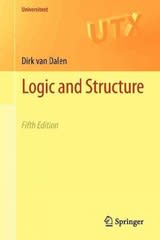Question
5 . Consider the following data, for changes in economic output ( i.e., Gross Domestic Product) in the given country in the last quarter (
5. Consider the following data, for changes in economic output ( i.e., Gross Domestic Product) in the given country in the last quarter ( Jul. - Sep. 2021):
Australia + 3.9 % Denmark + 3.7 Mexico + 4.5
Austria + 5.7 FRANCE + 3.3 Spain + 3.4
Brazil + 4.0 GERMANY + 2.6 Sweden + 4.5
BRITAIN + 6.8 ITALY + 3.9 South Africa + 2.9
CANADA + 4.0 JAPAN + 1.2 USA + 4.9
Consider the sample of the 15 countries above.
a.) Solve for the median. (2)
b.) Solve for the sample mean. (2)
c.) Solve for the sample standard deviation. (1)
The 7 countries highlighted in upper case letters are known as the " G7" .
Now consider the population data from the G7 alone.
d.) Solve for the population mean. (2)
e.) Solve for the population variance. (2)
f.) Solve for the population standard deviation. (1)
6. An experiment results in one of 4 outcomes.
The experiment can be performed repeatedly ( like a coin toss).
The outcomes are mutually exclusive and independent.
The probabilities of the outcomes ( upon any individual performance of the
experiment) are as follows:
O(1) = .4 O(2) = .2 O(3) = ? O(4) = .3
a.) Solve for the probability of O(3). ( 2)
b.) Solve for the probability that the outcome is O(1) or O(2) ( i.e., solve for
P(O(1) OR O(2)). (3)
Now consider two consecutive performances of the experiment.
c.) Solve for the probability of the event : ( O(1) AND O(2)) ( in that order). (3)
7. A car dealership had 200 customers on the lot on a particular Saturday. Upon leaving, the customers were asked if they were happy with the service provided by the dealership's staff. The contingency table below describes the data regarding the customers:
BOUGHT A CAR?
Yes No
HAPPY
WITH Yes 16 156
CUSTOMER
SERVICE?
No 4 24
a.) If a customer is chosen at random, solve for the probability that they bought a car.
(2)
b.) If a customer is chosen at random, solve for the probability that they were not
happy with customer service and did not buy a car. (3)
c.) Solve for the probability that a customer bought a car, GIVEN they were happy
with customer service. (3)
d.) Solve for the probability that a customer was happy with customer service,
GIVEN that they bought a car. (3)
8. Draw a tree diagram for the contingency table listed above ( in # 7). (6)
9. Consider a new experiment, with 7 possible outcomes ( O(1) through O(7)).
Event A = ( O(1), O(2), O(4))
Event B = ( O(1), O(3), O(4), O(6), and O(7))
a.) List the set that corresponds to the union of A and B. (2)
b.) List the set that corresponds to the intersection of A and B. (2)
You know the following probabilities:
P( A or B) = .6
P(A) = .4
P(B) = .55
P( O(1)) = .2
c.) Solve for P( A and B); show your work. (4)
d.) Solve for P(O(4)). (3)
Step by Step Solution
There are 3 Steps involved in it
Step: 1

Get Instant Access to Expert-Tailored Solutions
See step-by-step solutions with expert insights and AI powered tools for academic success
Step: 2

Step: 3

Ace Your Homework with AI
Get the answers you need in no time with our AI-driven, step-by-step assistance
Get Started


